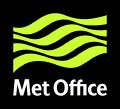Instrument

Met Office: Raymetrics LR111-D300 Raman lidar
Abstract
The Met Office operate a network of 10 Raymetrics LR111-D300 Raman lidars as part of their aerosol remote sensing capability. The network consists of nine fixed locations evenly distributed across Britain, and one mobile facility normally located at Watnall near Nottingham (Adam et al. 2017). The first lidar was installed at the Camborne site in 2015, and the network was fully installed by September 2016. The lidars, Raymetrics LR111-300s, are bespoke systems developed and manufactured by Raymetrics to meet the Met Office and London Volcanic Ash Advisory Centre (VAAC) needs. The instruments emit at 355nm and have polar and co-polar depolarisation detection channels at 355nm, and an N2 Raman detection channel at 387nm. The polarization channels of each lidar are calibrated using the + / - 45 degree procedure from Freudenthaler et al. 2009. Alignment is ensured using the telecover test described in Freudenthaler et al. 2018. Co-located with the lidars are Cimel CE318 multiband sun-photometers, which are part of the AERONET network. Each lidar is operated remotely from the Met Office Exeter headquarters. The primary aim of the network is the detection and quantification of volcanic ash aerosols during a volcanic event, and the network is only test fired only for a few hours each week. Outside of these times the lidars may be fired if there is a mineral dust outbreak or other such aerosol event of interest. The lidars will not fire if any precipitation is detected.
Transmitter: Quantel CFR200 laser at 355nm, with 50mJ/pulse at 20Hz (i.e. 1W) and is "eye-safe"
Receiver: 30cm diameter telescope
Detectors for 355nm (parallel and perpendicular polarization) and 387nm (N2 Raman channel)
Beam and receiving telescope's field of view having complete overlap at ~250m.
Lidar beam has a near-vertically pointing direction.
Adam, M., Buxmann, J., Freeman, N., Horseman, A., Slamon, C., Sugier, J., and Bennett, R.: The UK Lidar-Sunphotometer Operational Volcanic Ash Monitoring Network, in: Proceedings of the 28th International Laser Radar Conference, 2017.
Freudenthaler, V., Esselborne, M., Wiegner, M., Heese, B., Tesche, M., Ansmann, A., Muller, D., Althausen, D., Wirth, M., Fix, A., Ehret, G., Knippertz, P., Toledano, C., Gasteiger, J., Garhammer, M., and Seefeldner, M.: Depolarization ratio profiling at several wavelengths in pure Saharan dust during SAMUM 2006, Tellus B, 61, 165-179, http://dx.doi.org/10.1111/j.1600-0889.2008.00396.x, 2009.
Freudenthaler, V., Linné, H., Chaikovski, A., Rabus, D., and Groß, S.: EARLINET lidar quality assurance tools, Atmospheric Measurement Techniques Discussions, 2018, 1-35, https://doi.org/10.5194/amt-2017-395, https://www.atmos-meas-tech-discuss.net/amt-2017-395/, 2018.
| keywords: | lidar, Raman, aerosol, dust |
|---|---|
| instrumentType: | Lidar |
| Parent-Instrument: | |
| subInstrument: | |
| Previously used record indentifiers: |
No related previous identifiers.
|
